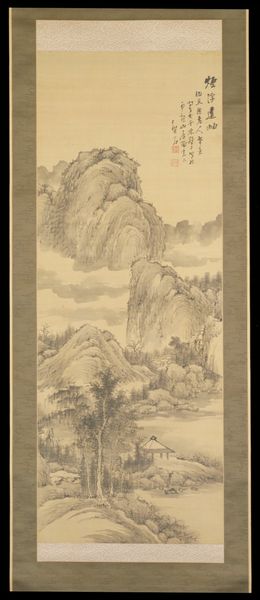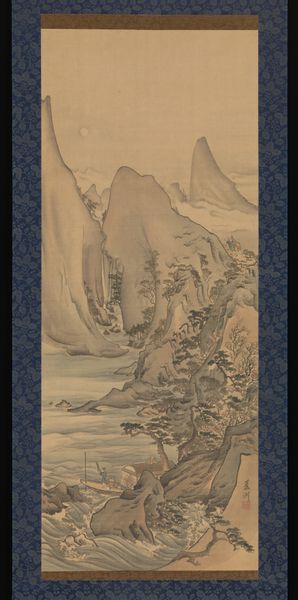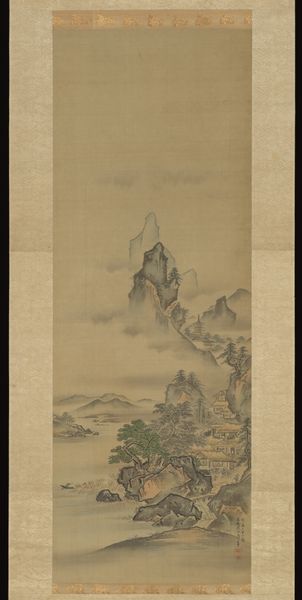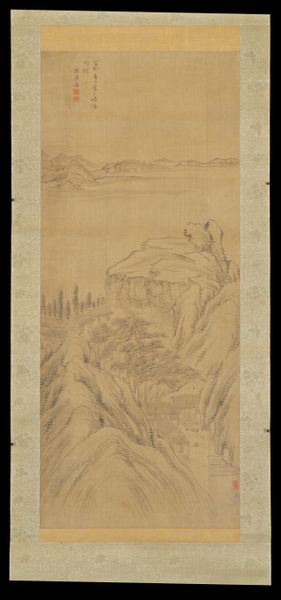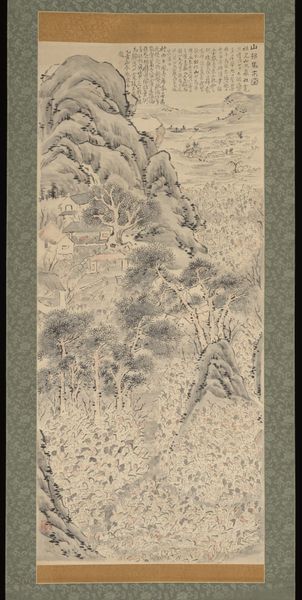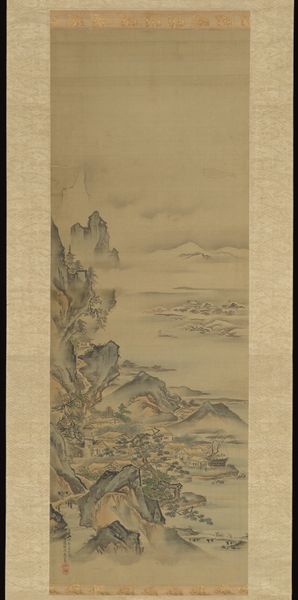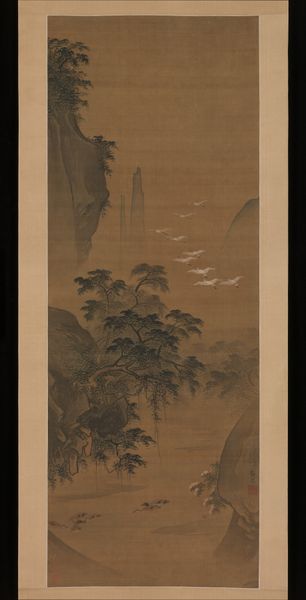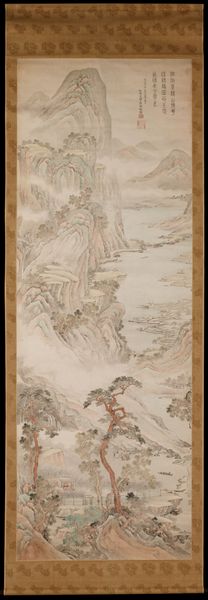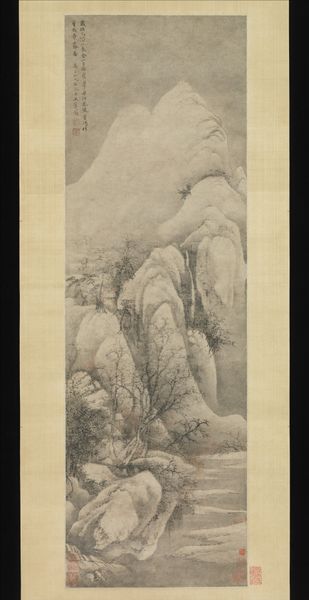
painting, hanging-scroll, ink
#
medieval
#
painting
#
asian-art
#
landscape
#
hanging-scroll
#
ink
#
china
Dimensions: 72-1/16 x 26-13/16 in. (183.0 x 68.1 cm)
Copyright: Public Domain
Curator: Welcome. Before us hangs "Thatched Huts Among Ridges in Winter," a landscape created in 1649 by Lan Ying, a Chinese artist of the late Ming Dynasty. The piece, rendered in ink on a hanging scroll, is now housed here at the Minneapolis Institute of Art. Editor: It evokes a certain feeling of austere tranquility. The monochromatic palette emphasizes the skeletal forms of the trees and the jagged rocks. There is also a strong upward thrust to the composition that almost seems to mimic the act of breathing—an inhale towards some lofty, spiritual aspiration. Curator: It's remarkable how the winter scene invites introspection and solitude, recurring themes in traditional Chinese landscape painting. These mountains are not merely topographical features; they function as symbols of steadfastness, of enduring power and even serve as sites of communion with nature. Editor: Yes, that small pavilion nestles perfectly in this craggy terrain, suggesting a contemplative space within the landscape's grand design. The formal arrangement creates balance in nature, perhaps an allegory to inner balance within people as well? I am fascinated with how Eastern aesthetics uses formal elements to create emotional and spiritual space. Curator: It could be argued that this aesthetic reflects Taoist principles that value harmony between humanity and the natural world. By rendering a dwelling seamlessly integrated within this imposing landscape, Lan Ying conveys that belonging and interconnectedness. The leafless branches become not symbols of death, but anticipation for a springtime renewal. Editor: That subtle shift in perspective alters my immediate feeling. What struck me initially as bleak transforms into an anticipation. The skillful ink wash creates depth and texture, inviting viewers to participate, to journey visually into this symbolic realm. Lan Ying's strategic use of light further guides my vision upwards and then to the dwellings and small figure in it. It is the promise of new life amid dormancy, is that it? Curator: Exactly! Lan Ying masterfully communicates that latent potential. In a world marked by constant change, the mountain is a silent witness—embodying enduring strength and acting as a constant reminder of resilience. Editor: Indeed. Analyzing the composition from this iconographic angle deepens the painting, prompting questions beyond formal properties. Curator: Precisely! Editor: Thank you.
Comments
minneapolisinstituteofart about 2 years ago
⋮
The larger forms in this wintry landscape have strong silhouettes, with dramatic contrasts between light and dark surfaces. Lan Ying’s inscription indicates that he painted this scene in the manner of Wang Wei (699–759), a Tang dynasty poet and master artist associated with the beginnings of the ink landscape tradition. Wang’s poems and landscape paintings are imbued with the spirit of eremitism—the retreat from society into a life of seclusion. This spirit can be felt in Lan’s composition here: a solitary cottage on a mountain amid a grove of trees. In scenes like this, the atmospheric effects portray the concept of eremitism as a peaceful, nonreligious act of solitude within an otherworldly setting.
Join the conversation
Join millions of artists and users on Artera today and experience the ultimate creative platform.
